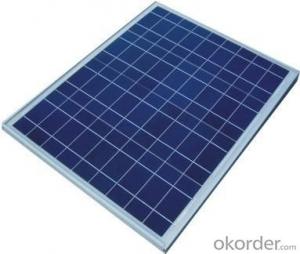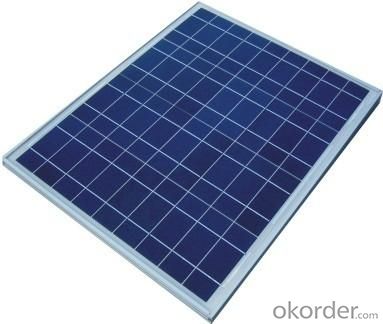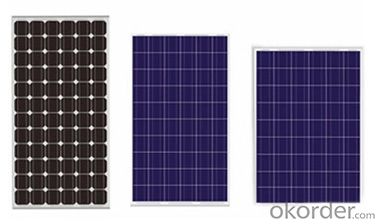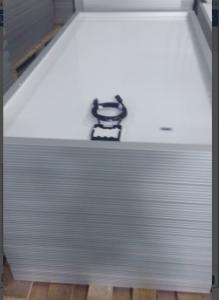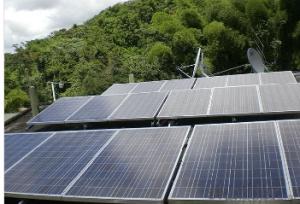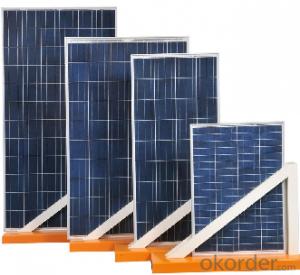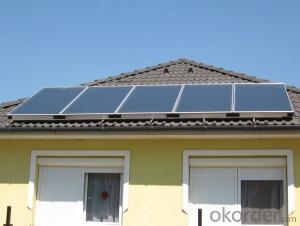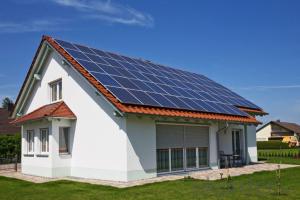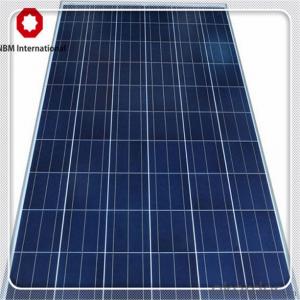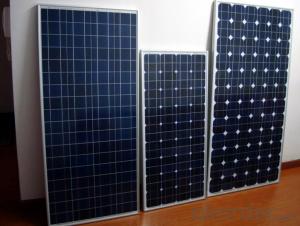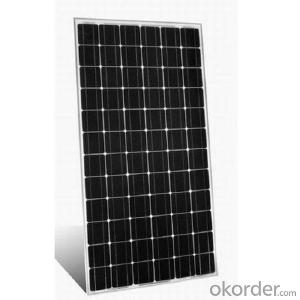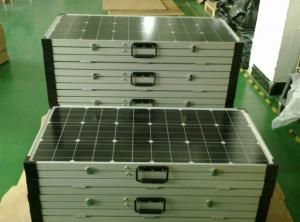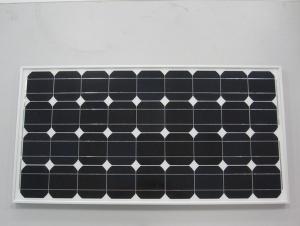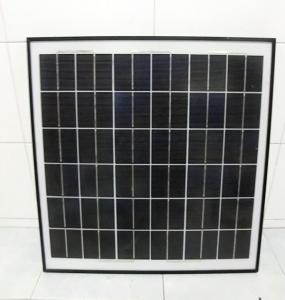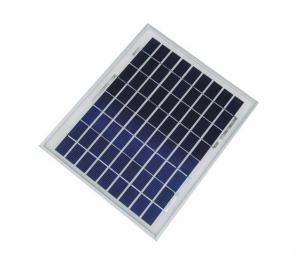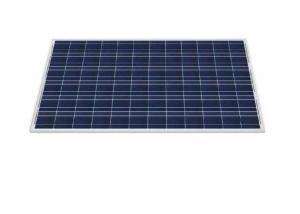3D Printed Flexible Solar Panel & Poly Solar Module 250W
- Loading Port:
- China main port
- Payment Terms:
- TT or LC
- Min Order Qty:
- 50 pc
- Supply Capability:
- 10000 pc/month
OKorder Service Pledge
OKorder Financial Service
You Might Also Like
1.Structure of Solar Module Description
CNBM Solar's photovoltaic module is designed for designed for large electrical power requirement. It is the optimal choice for both on-grid and off-grid power systems. CNBM Solar offers high performance of power per square foot of solar array.
2.Main Features of the Solar Module
Solar Cell: High efficency crystalline solar cell. Even if under the weak light, the solar module can produce maximum power output.
Tempered glass: Anti-reflecting coating and high transmission rate glass increase the power output and mechanical strength of solar module.
EVA and TPT: Using high quality EVA and TPT to prevent destroying and water.
Strong aluminum frames to strengthen the load hold and to stand against high wind.
Junction box: Multi function junction box with water proof.
Long lifetime: ≥25 years; Less power decrease.
Good performance of preventing from atrocious weather such as wind and hails.
Resisting moisture and etching effectively, not effected by geology.
The certificate issued by international authority: UL, TUV, IEC, VDE, CE.
Quick Details
| Place of Origin: | Jiangsu China (Mainland) | Brand Name: | CNBM | Model Number: | KPV200W-250W |
| Material: | Monocrystalline Silicon | Size: | 156MM | Max. Power: | 250W |
| Weight: | 19.5KGS | Vmp: | 30.5V | Wp: | 200-250W |
| MSV: | 1000V DC | product: | flexible solar panel |
Packaging & Delivery
| Packaging Detail: | Cell packing 22 a box |
| Delivery Detail: | 10 day |
Manufacturer
1. 3.2mm high transmissive Low iron tempered glass.EVA Iaminate with Glass yield long life modules while enhancing cell perfomance
2.Power range 200Wp-250Wp.
3.Bypass diodes to avoid hot-spot effect.
3.Solar Module Images
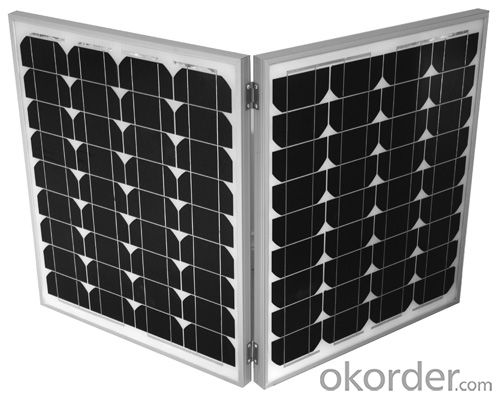
4.Solar Module Specification
Quality and Safety
1.Rigorous quality control meeting the highest international standards
2.High-transmissivity low-iron tempered glass, strong aluminium frame
3.Using UV-resistant silicon
4.ISO 9001:2008 and ISO 14001:2004
5.IEC61215, IEC61730, Safety Class in conformity to CE
Features
1.High conversion efficiencies resulting in superior power output performance.
2.Outstanding power output even in low light or high temperature conditions
3.Optimized design for ease of soldering and lamination
4.Long-term stability,reliability and performance
Warranties
1.25 years limited product warranty
2.15 years at 90% of the minimal rated power output
3.25 years at 80% of the minimal rated power output
Temperature Coefficient
NOTC(Nominal Operating Cell Temperature) 47 ± 2 ℃
Voltage temperature coefficient(Voc) -0.34% ℃
Current temperature coefficient(Isc) +0.09% ℃
Power temperature coefficient(Pmmp) -0.37% ℃
| Module Size(mm) | 1650×992×50MM | ||||
| Module Array(pcs) | 6×10PCS | ||||
| Size of Cells(mm) | 156× 156 | ||||
| Weight(kgs) | 19.5KGS | ||||
| Tolerance | ±3 % | ||||
| Operation Temp Scope( ℃ ) | -40/+85 ℃ | ||||
| Max. System Voltage | 1000V DC | ||||
| Model No. | Wp(W) | Vmp(V) | Imp(A) | Voc(V) | Isc(A) |
| kpv 200p-60 | 200 | 28.5 | 7.02 | 34.2 | 7.80 |
| kpv 205p-60 | 205 | 28.5 | 7.19 | 34.2 | 7.80 |
| kpv 210p-60 | 210 | 29 | 7.24 | 36.0 | 7.82 |
| kpv 215p-60 | 215 | 29 | 7.41 | 36.0 | 8.01 |
| kpv220p-60 | 220 | 29 | 7.59 | 36.0 | 8.19 |
| kpv225p-60 | 225 | 29.5 | 7.63 | 36.6 | 8.24 |
| kpv230p-60 | 230 | 29.5 | 7.80 | 36.6 | 8.42 |
| kpv235p-60 | 235 | 30.0 | 7.83 | 37.2 | 8.46 |
| kpv240p-60 | 240 | 30.0 | 8.00 | 37.2 | 8.65 |
| kpv245p-60 | 245 | 30.0 | 8.17 | 37.2 | 8.74 |
| kpv250p-60 | 250 | 30.5 | 8.20 | 37.8 | 8.85 |
solar panel Pic. and drawing:
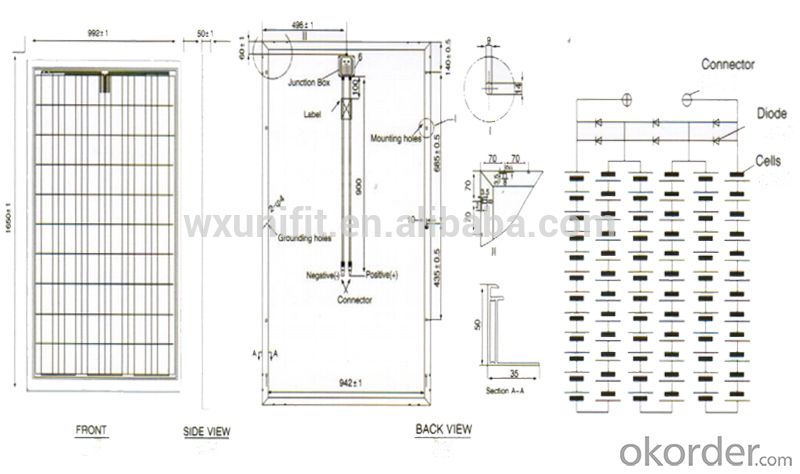
5.FAQ of Solar Module
1. Q: Do you have your own factory?
A: Yes, we have. Our factory located in Jiangyin city, jiangsu province.
2. Q: How can I visit your factory?
A: Before you take off from your country, please let us know. We will show you the way,or arrange time to pick you up if possible.
3. Q: Do you provide free sample?
A: Usually we do not offer free sample
4. Q: Could you print our company LOGO on the nameplate and package?
A: Yes, we can do that.
- Q: Would like to know if the DIY Solar panel systems can be as efficient as a commercial grade panel.
- They can be if you are well educated and skilled in their assembly and working functionality, provided you obtain the same high quality grade cells and do proper assembly. Chances are good however that your first several may be just a little below par until you really get the hang of it and become well practiced just as the professionals are. Does take a considerable amount of grunt work however so figure if this is best use of your time or if you'd do better to earn at your regular work and pay a professional to do that which they do best.
- Q: im aware i dont fully understand. but with what i do. if P = iv, and current changes with voltage, whats the point of changing either. if in any cicumstance, you end up with the same wattage, how does changing either effect a solar setup. (2v panel vs 24v)thanks in advance. explain in laymans if you can.
- The choice of solar panel voltage comes down more to what the panels will be connected to. You're right that power can remain the same at the different voltages. Higher input (panel) voltages are sometimes used in inverter systems to reduce the effect of voltage draw-down. 2v panels (about 20v open circuit) work well for charging 2v batteries, connected in parallel, through a charge controller. For use of a grid-tie inverter, higher input voltages are sometimes used to reduce the effects of draw-down. You want to select and wire (parallel vs. series) your panels based on the input voltage requirement of the load, whatever it may be.
- Q: Ok so i have to solar panels to charge a battery however the panels hooked up in series does charge the battery very slowly because series connections only multiplies the voltage but leaves the current the same. Is there a way i can also hook both of them up in parallel at the same time to multiply the current for faster charge? I know i can do this with 4 panels but i dont want to spend extra. So is there a way to hook up 2 solar panels in series and parallel at the same time? Thanks in advace
- No. You can only hook them up as one or the other. Attempting to do both would simply short circuit the panels and you'd get no output at all. Your panels should produce an open circuit voltage in full sun that is almost twice the voltage of the battery you want to charge (it's because solar panels produce the most power at their maximum power point, which is usually about 60% of the open circuit voltage). If a parallel connection does that, then use it, otherwise you'll need to use series. You didn't say what the capacity and voltage of the panels or the size of the battery was. It's quite possible you don't have enough panel - you need panels that will put 5% (at least) of the ampere hours capacity of the battery in as current. For example, if you have a 00 amp-hour battery, you'll need enough panel to put 5 amps in at the voltage of the battery. DK
- Q: Can solar panels be used to power a farm?
- Yes, solar panels can be used to power a farm. By harnessing the power of the sun, solar panels can generate electricity that can be used to run various farm operations such as irrigation systems, grain dryers, electric fencing, and even power agricultural machinery. This renewable energy source not only reduces reliance on fossil fuels but also helps farmers save on energy costs while promoting sustainability.
- Q: please help me
- Solar okorder /
- Q: What are the maintenance requirements for solar panels?
- The maintenance requirements for solar panels typically involve regular cleaning to remove dirt and debris, as well as ensuring that they are not shaded by nearby trees or structures. Additionally, occasional inspections for any signs of damage or malfunction are recommended, and if necessary, repairs or replacements may need to be carried out by a professional. Overall, solar panels are known for their low maintenance needs, making them a cost-effective and sustainable energy solution.
- Q: Can solar panels be installed on a historical building?
- Yes, solar panels can be installed on a historical building. However, it is important to consider the impact on the building's architectural integrity and historical significance. Careful planning and consultation with preservation experts may be necessary to ensure that the installation is done in a way that respects and preserves the building's historic value.
- Q: lately i have been interested in solar power. i own my own home and in Texas it's HOT, so my A/C is always on and that light bill is like $300.00 a month. i was looking at other light companies but then i remembered that there are the so called solar power but i dont knowknow to start or how it would work to power the a/c machine...pls help
- We are in the UK, but we now have two systems, one which heats the water and the other generates electricity via PV panels. You need to have a roof area facing in the correct direction and at a suitable pitch. If the sun is hitting the roof at an oblique angle the loss of benefit is high. The system that heats the water has the fastest pay back time. Our water has been hot since we had the system installed despite a poor summer here. Over here we can export surplus electricity created by the PV panels back to the national grid, and they buy that surplus. We often have surpluses during the day, but obviously when it is dark and we use electricity, we sort of buy it back. In the 6 months since it was installed, we have generated about 85% of our needs. Our best day was when we generated 46% of our needs. As you may know, we have had rain and floods over here, but to-day we still generated 22% of our needs and we put on several loads of washing. we have kept a spreadsheet of all teh figures. We are very pleased with ours, and we got a grant, but it was very expensive for the PV system. i'd recommend it, though. i have grandchildren and I feel we have to do something to preserve resources for them and to help combat climate problems. Make sure you have done other things - such as made sure your insulation etc is as good as it can be.
- Q: Can solar panels be installed on mobile homes?
- Yes, solar panels can be installed on mobile homes.
- Q: Can solar panels be installed on a balcony or terrace?
- Yes, solar panels can be installed on a balcony or terrace. However, it is important to consider factors such as the available space, orientation, shading, and structural integrity of the balcony or terrace before installation. Additionally, local regulations and building codes may also need to be taken into account.
Send your message to us
3D Printed Flexible Solar Panel & Poly Solar Module 250W
- Loading Port:
- China main port
- Payment Terms:
- TT or LC
- Min Order Qty:
- 50 pc
- Supply Capability:
- 10000 pc/month
OKorder Service Pledge
OKorder Financial Service
Similar products
Hot products
Hot Searches
Related keywords
